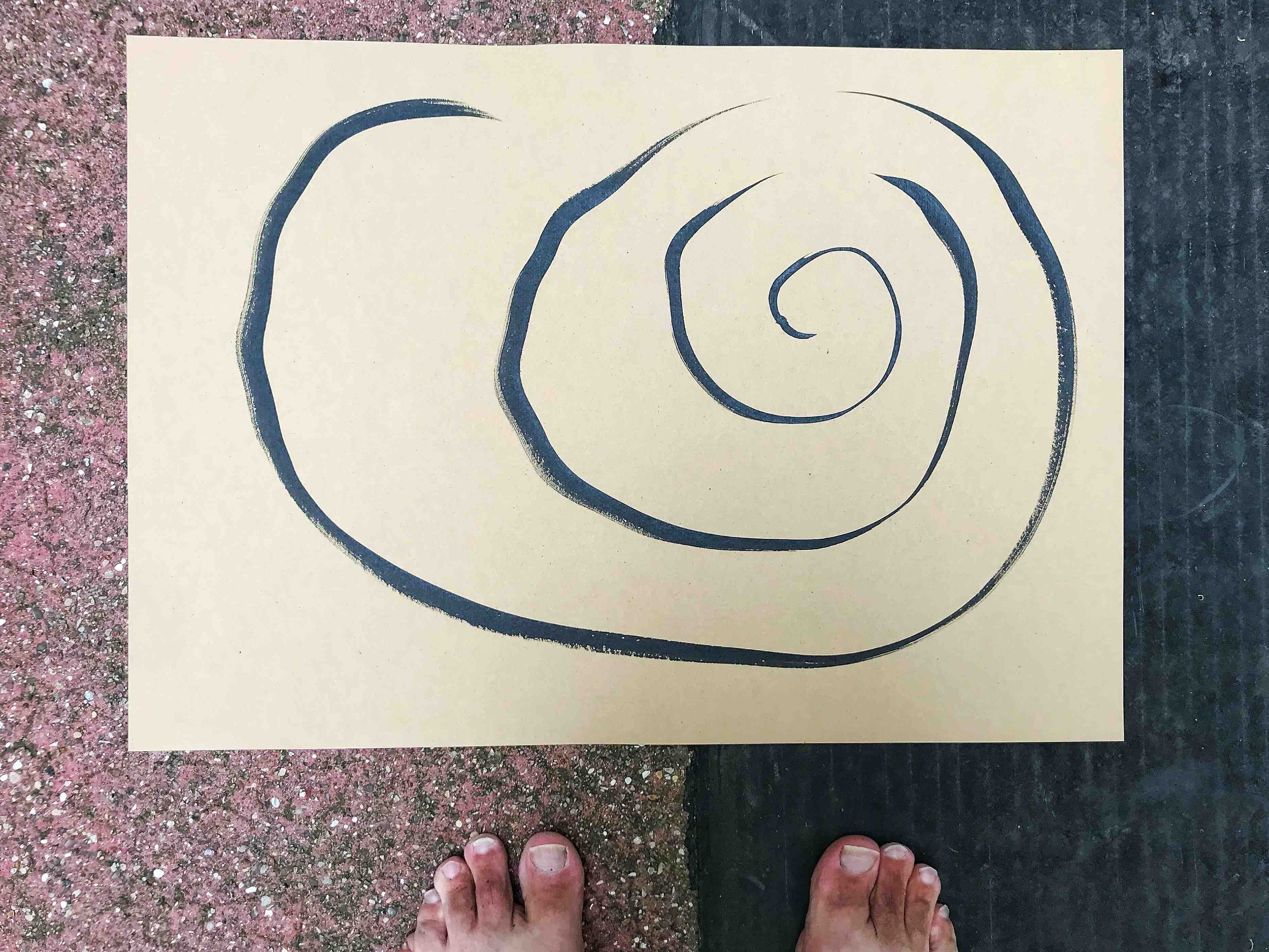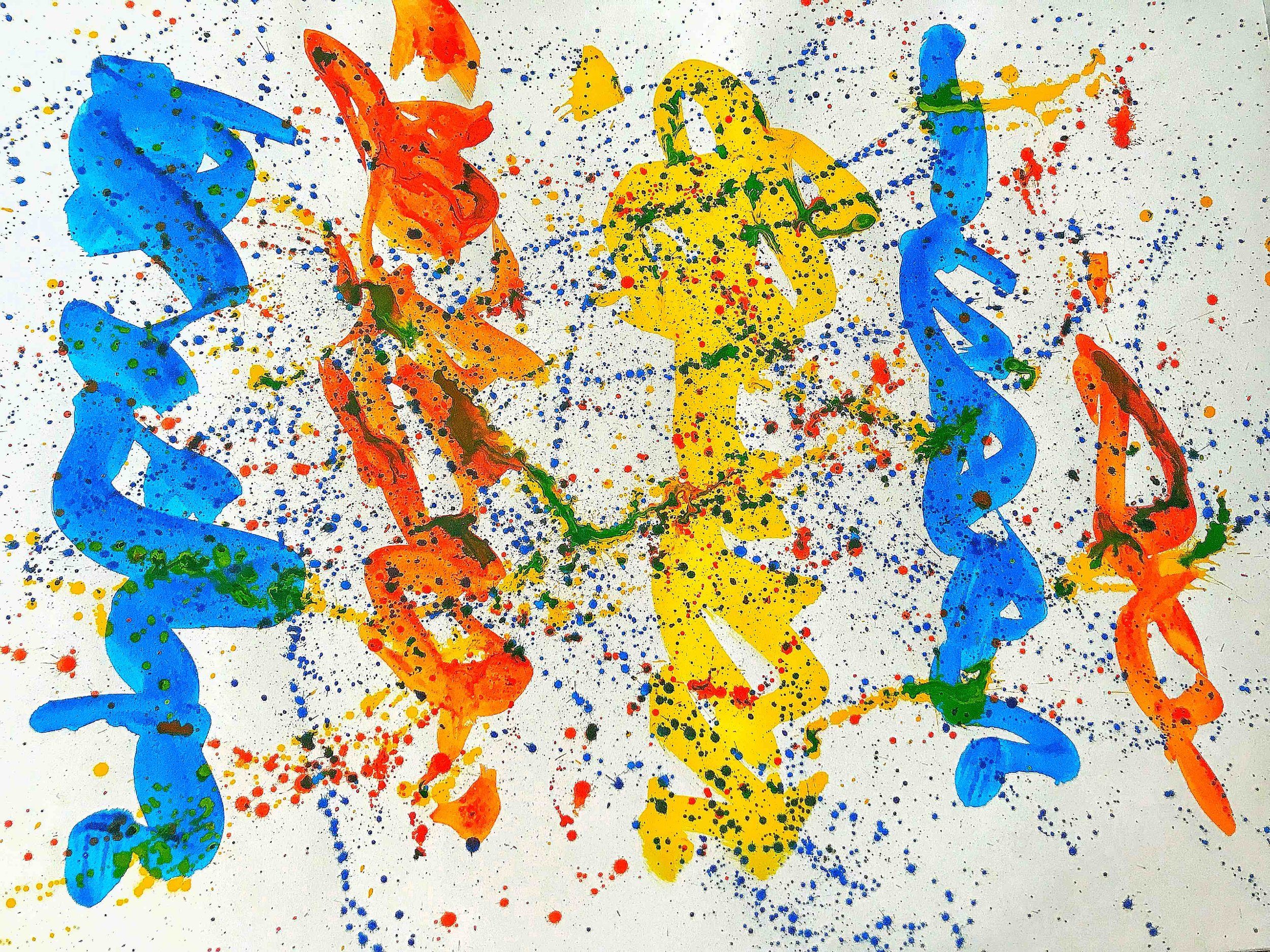A year ago (on July 30, 2022 exactly) I started drawing with brush and ink. Back then I wrote about how it all came about. I thought you might be interested in some of the things I learned about the creative process during this wonderful year.
1. Creativity is the interaction of doing something for the first time (or as if for the first time) and doing the same thing hundreds or thousands of time. The innocent child is sometimes more creative than the jaded expert. We’re all familiar with beginner’s luck, which we can also call Zen Mind, Beginner’s Mind (the title of a famous, excellent little book). Not knowing what you’re getting into gives you a sort of freedom. And if you’d like to “practice the freedom,” so to speak, you have two good choices: keep learning new things; or learn how to “remain new inside.”
2. Creativity, like everything else, has a rhythm—its own rhythm, for you to discover and to play with. I mean the rhythms of a long-term project (conception, creation, revision, publication), the rhythms of the seasons and days and hours, and the rhythms of the moment: you can drown if you jump onto the boat a second too late. It took me 64 years to start making these drawings; it takes me a few seconds or a minute to make some of them. If in the moment of making the drawing I’m in sync with The Rhythm . . . wow, the few seconds give birth to something beautiful and meaningful. And if I’m not in sync? Nah. Meh. Foo. Blah.
3. Creativity can be a response to an inner impulse or to an outside pressure or desire. You feel that you really, really need to do something and you can’t explain exactly why; or you feel that you’d like to compete with someone else, or to “produce” something. One is an inner impulse, the other is an outer impulse. We each have our own balance of these necessary forces, but my preference has been to listen to the inner and tune out the outer.
4. Creativity bubbles up from intuition and improvisation. Incomprehensible dreams that you don’t remember very well; sudden bursts of words that express a long-suppressed thought; decisions that aren’t decisions: out for a walk, you turn left instead of right, and you can’t say why you did that, and there you find yourself talking to a stranger who tells you something very special. In creative work, craft and skill are very important . . . but they come after the dreams and bursts and indecisions, not before them and above all not in place of them.
5. Creativity and the ego have an interesting dance. Creativity can be an affirmation of the ego (“I made this thing here! Look at it, and look at me!”) or a bypassing of the ego (“I don’t know if or how or why I made this”). With my own creative work, I feel that many things make themselves: drawings, poems, compositions, pedagogical insights. I kinda receive them and pass them along without a feeling of ownership. This takes trust and faith in the process; the absence of pride (which is a sort of inflation of the ego); and a more or less permanent state of wonderment and gratitude. Less ego, more flow!
6. Creative explorations happen in a context. In the case of my drawings, this included dozens of visits to museums and galleries, reading books, watching documentaries about the creative process, going for seemingly idle walks during which the creative process kept distilling itself in the background. Places and people, events, travels, sunny days and rainy days, siestas, biweekly visits to the street market: any one drawing of mine gathers the “totality of context” and expresses it in a piece of paper. Alertness to context helps creativity.
7. Creativity doesn’t necessarily mean pleasant experiences only. You might become obsessed with the process, and you might not sleep well or take care of your business. You might pick fights with people dear to you just because you’re in the middle of a creative burst, and those people dear to you have their own needs and wants, their own rhythms, their own demands (some of them reasonable!) on your time and your space. Beloved ones apart, you can also become frustrated, discouraged, bored, and etc. (to coin an emotion) in the work itself, and “in you.” It’s kinda normal!
8. Creativity takes your life in directions you can’t imagine or foresee. My drawings went places as if by themselves, and I tagged along to discover what the drawings wanted to do. Here’s an example: I passed from ink to gouache, and to a style I’ll call “post-childhood finger-drawing;” then I passed from finger-drawing to wrist-drawing and forearm-drawing. Whaaaat, forearm???? In the middle of my year-of-drawing-with-ink, I started writing some poems in Spanish, a language I’ve been studying with a lot of joy and some discipline. The poems were organically born of the drawings, but during the first few weeks and months of brush-ink-gouache-forearm exploration I totally didn’t expect their emergence. Plus, these poems became quite ambitious and intricate, partly in response to the theme of my drawings. Had you told me five years ago that I’d be officiating the happy marriage of Spanish and art, I’d have called you muy loco, ay caramba.
Would you like eight kitchen magnets? Here they are.
Remain new inside.
Rhythm is everything.
Obey the inner impulse.
Intuition before skill.
Less ego, more flow.
Be alert to the context.
Displeasure exists.
Creativity leads, you follow.
©2023, Pedro de Alcantara








